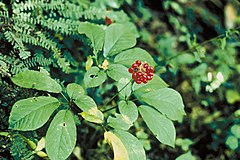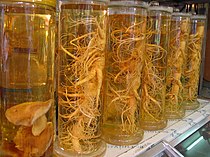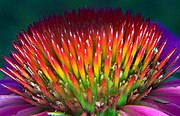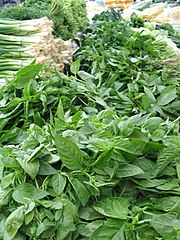It's been busy with good weather and a lot to look at!
Venus has become distinctly crescent, and is approaching Saturn. Sad to see the ringed planet fading fast in the west already, but it is a neat group with Regulus, Castor and Pollux.
Iv'e been able to muster Jupiter, but it is pitifully low in the dumps of the ecliptic. A good show anyway.
The moon is spectacular as always, and it's pitiful how much lunar nomenclature I've forgotten... will have to review crater names or get handier atlas.
The big news of course is observing the International Space Station 3 nights out of 4 this past week! My family and I caught is and the shuttle Atlantis close behind emerging from a cloudy west... ISS was favorably oriented and amazingly bright... rivaling the crescent moon, I thought and much brighter than Venus!
Friday night, I set up at Dairy Isle in Bainbridge which was packed. I simply set my telescope on the lawn for anyone to look and soon had a good crowd awaiting event. Sure enough, ISS emerged climbing high into a perfect sky right to zenith, and we were about 40 people cheering it on. And, for the first time ever, I tracked it down in the scope and saw an amazing sight. I positively saw structure and it seemed like a waffle pattern on the solar panels. The quality of the light was unearthly, anglelic, brilliant. Someone else called out Atlantis, which was closer behind ISS than I thought.
Finally, I set up downtown Chagrin with full video capability Saturday night. We enjoyed the standard sights, then ISS emerged on cue just below Venus. This was a relatively poor apparition, but I did get some very erratic drunken video. The best moments of this video does indeed show some kind of structure, and this is a first after the hundreds of observations of Mir, shuttles, and ISS.
I am deeply indebted to Walter Nissen for his accurate and timely e-mail alerts. He made me look like a genius indeed.
And now for something completely different. Just now, Sunday afternoon, I set up my scope downtown Chagrin to see Venus at 2:30 pm. By 2: 40, it was completely cloudy.
Sunday, June 24, 2007
Recent News and Observations from Chagrin Falls
Posted by
starman of CFalls
at
12:28 PM
0
comments
![]()
Thursday, June 14, 2007
ENTER
Enter
the enchanted secret scupture garden
Rita DiCello, paintings
the flier is still in the works, hidden away in my computer for now, as soon as it's done and all of us agree, I'll post the real deal. But for NOW, mark this date in your calendar, tell all your friends, put a sticky note on your mirror, scribble it out and hang it on the fridge...this is a going to be a great event, guaranteed. See, it's in writing, but it'll only be great...IF you attend!
Posted by
Unknown
at
7:57 PM
0
comments
![]()
Tuesday, June 12, 2007
Hyperion Group LTD.
 Hyperion Group LTD. is an industry leader for cost effective inspection and audit services. Witha convenient west side location, our rapid response team can be at yours or your customers facility in a matter of hours with the experience and know how to help with your companies needs. Our other services include:
Hyperion Group LTD. is an industry leader for cost effective inspection and audit services. Witha convenient west side location, our rapid response team can be at yours or your customers facility in a matter of hours with the experience and know how to help with your companies needs. Our other services include:
or call us toll free @ 1-877-816-4884
Posted by
infohype
at
8:46 PM
0
comments
![]()
Labels: distribution, Hyperion Group, packaging, sub-assembly, transportation, warehousing
2005 Poorest City In The Nation: Cleveland Ohio
See what's free at AOL.com.
Posted by
Anonymous
at
11:06 AM
0
comments
![]()
Wednesday, June 6, 2007
Chagrin Falls/Bainbridge Events To Celebrate the Cavs Victory
Ricks café
Pretzel logic
rock
Saturday, June 9
time trax
rock
Saturday, June 16
afterthought
R&B
Greenville
Cowboy
8th - Friday
Top Dog
9th- Saturday
Liquor Box
ª Grab this Headline Animator
Choose the right car based on your needs. Check out
Posted by
Dominic Vecchio
at
4:47 PM
0
comments
![]()
Tuesday, June 5, 2007
Anyone missing a flip fop? I found one at Lowes.
I found a flip flop at Lowes. I took pictures of it, it is brown with stones on it (semi-precious stones). It is still laying there but I have pictures if you want. It was at the Loews in Bedford Hts Ohio. It could be Cinderella's. This is the second flip flop I have found. The other one is at Hunt Club.
Please notify me at my email address if you have lost your flip flop.
Chagrin Guy at you_b_nice@yahoo.com
Fussy? Opinionated? Impossible to please? Perfect.
Posted by
Dominic Vecchio
at
5:29 PM
1 comments
![]()
Echinacea
Echinacea
From Wikipedia, the free encyclopedia
Please see the discussion on the talk page. |
- This article is about the flowering plant. For Superorder Echinacea (Echinodermata) see Sea urchin
 Echinacea purpurea | ||||||||||||||
| Scientific classification | ||||||||||||||
| ||||||||||||||
See text |
The genus name is from the Greek echino, meaning "spiny", due to the spiny central disk. They are herbaceous, drought-tolerant perennial plants growing to 1 or 2 m in height. The leaves are lanceolate to elliptic, 10-20 cm long and 1.5-10 cm broad. Like all Asteraceae, the flowers are a composite inflorescence, with purple (rarely yellow or white) florets arranged in a prominent, somewhat cone-shaped head; "cone-shaped" because the petals of the outer ray florets tend to point downward (are reflexed) once the flower head opens, thus forming a cone. Studies have both proved and disproved the effectiveness of Echinacea in combating common diseases such as the cold.
- Echinacea angustifolia - Narrow-leaf Coneflower
- Echinacea atrorubens - Topeka Purple Coneflower
- Echinacea laevigata - Smooth Coneflower, Smooth Purple Coneflower
- Echinacea pallida - Pale Purple Coneflower
- Echinacea paradoxa - Yellow Coneflower, Bush's Purple Coneflower
- Echinacea purpurea - Purple Coneflower, Eastern Purple Coneflower
- Echinacea sanguinea - Sanguine purple coneflower
- Echinacea simulata - Wavyleaf Purple Coneflower
- Echinacea tennesseensis - Tennessee Coneflower
Contents
|
Uses
Constituents
Studies
Notes and references
- ^ http://www.ars.usda.gov/SP2UserFiles/Place/36251200/Posters/Echinacea_poster2.pdf
- ^ "Efficacy and safety of echinacea in treating upper respiratory tract infections in children: a randomized controlled trial", Taylor, J. A., et al. 2003., Journal of the American Medical Association 2003 Dec 3;290(21):2824-30
- ^ "An evaluation of Echinaceae angustifolia in experimental rhinovirus infections." Turner, R. B. et al. 2005., New England Journal of Medicine 353: 341-348..
- ^ Paul Bergner. Healing Power of Echinacea and Goldenseal and Other Immune System Herbs (The Healing Power)1997
- ^ University of Maryland Echinacea Study Review
- ^ Linde K, et al. Echinacea for preventing and treating the common cold. Cochrane Database Syst Rev. 2006 Jan 25;(1):CD000530
- ^ Mayo Clinic report
- ^ Herbal medicines. "Selected clinical considerations focusing on known or potential drug-herb interactions.", Miller, Lucinda G., 1998, Archives of Internal Medicine 158: 2200-2211.
Posted by
Anonymous
at
4:35 PM
0
comments
![]()
Herbs
Herb
From Wikipedia, the free encyclopedia
| This article is part of the Cuisine series |
| Foods |
|---|
| Regional cuisines |
| Asia - Europe - Caribbean South Asia - Latin America Middle East - North America - Africa Other cuisines... |
| Preparation techniques and cooking items |
| Techniques - Utensils Weights and measures |
| See also: |
| Famous chefs - Kitchens - Meals Wikibooks: Cookbook |
See also
- Apothecary
- Herbalism
- Herb garden
- List of herbs and spices
- Remedy
- Cannabis (drug) for which herb is a slang term
References
- ^ Dictionary.com. Retrieved on 2007-05-07.
External links
- Herbs - Cultivation, Harvesting, Curing and Uses
- The Herb Society of America
- International Herb Association
- United Plant Savers
- Herbs Etc.
- International Medicinal Plant Growers Consortium
Posted by
Anonymous
at
4:26 PM
0
comments
![]()
Sunday, June 3, 2007
Ginseng Revisited
Subgenus Panax Subgenus Trifolius Ginseng is a genus of 11 species of slow-growing perennial plants with fleshy roots, in the family Araliaceae. They grow in the Northern Hemisphere in eastern Asia (mostly northern China, Korea, and eastern Siberia), typically in cooler climates; Panax vietnamensis, discovered in Vietnam, is the southernmost ginseng found. This article focuses on the Series Panax ginsengs, which are the adaptogenic herbs, principally Panax ginseng and Panax quinquefolius. Ginseng is characterized by the presence of ginsenosides. Siberian ginseng (Eleutherococcus senticosus) is not a ginseng at all. It is another adaptogen, but a different species named "Siberian ginseng" as a marketing ploy; instead of a fleshy root, it has a woody root; instead of ginsenosides, eleutherosides are present, (see below). The English word ginseng derives from the Chinese term rénshēn (simplified: 人参; traditional: 人蔘), or Cantonese jan4 sang1, literally "man root" (referring to the root's characteristic forked shape, resembling the legs of a man). The difference between rénshēn and "ginseng" is explained by the fact that the English pronunciation derives from a Japanese reading of these Chinese characters. However, the current Japanese word for these characters 人参 (ninjin) means carrot, and ginseng is referred to in Japanese as 朝鮮人参 (chosen ninjin), or Korean ninjin. The botanical name Panax means "all-heal" in Greek, and was applied to this genus because Linnaeus was aware of its wide use in Chinese medicine. Both American and Panax (Asian) ginseng rhizomes are taken orally as adaptogens, aphrodisiacs, nourishing stimulants, and in the treatment of type II diabetes, including sexual dysfunction in men. The rhizome is most often available in dried form, either in whole or sliced form. Ginseng leaf, although not as highly prized, is sometimes also used; as with the rhizome it is most often available in dried form. This ingredient may also be found in some popular Energy Drinks: usually the "tea" varieties or Functional Foods. Usually ginseng is in subclinical doses and it does not have measurable medicinal effects. It can be found in cosmetic preparations as well, with similar lack of effect. It is considered a wasteful use of important herbs by herbalists. Ginseng root can be double steamed with chicken meat as a soup. (See samgyetang.) As with herbalism in general, ginseng's medical efficacy remains controversial. It has been difficult to verify the medicinal benefits of ginseng using modern science, as there are contradictory results from different studies, possibly due to the wide variety and quality of ginseng used in studies. Another issue is the profit potential of corporate research since ginseng cannot be patented. As a result, high-quality studies of the effects of ginseng are rare. Ironically, one of the better studies involving ginseng actually uses a proprietary ginseng extract [1] Ginseng is promoted as an adaptogen (a product that increases the body's resistance to stress), one which can to a certain extent be supported with reference to its anticarcinogenic and antioxidant properties,[2] although animal experiments to determine whether longevity and health were increased in the presence of stress gave negative results.[3] A comparative, randomized and double-blind study at the National Autonomous University of Mexico does indicate it to be "a promising dietary supplement" when assessed for an increase in quality of life [4]. Panax ginseng appear to inhibit some characteristics associated with cancer in animal models; nevertheless, this effect is unclear in humans.[5] There are references in the literature, including seemingly authoritative compendiums that appear to show interactions with ginseng. Herbalist Jonathan Treasure of the United States National Institute of Mental Health traces the growth of misinformation on an alleged adverse herb-drug interaction between the monoamine oxidase inhibitor phenelzine and Asian ginseng (Panax ginseng C.A. Meyer). This originally was mentioned in a 1985 editorial by Shader and Greenblatt in the Journal of Clinical Psychopharmacology. Shader and Greenblatt devoted a couple of lines to the case of 64 year-old woman who took an undisclosed dose for an undisclosed time of a dietary supplement product called "Natrol High" while concurrently taking phenelzine 60 mg qd. She experienced symptoms of "insomnia, headache, and tremulousness". Treasure contacted Natrol by email and discovered within ten minutes that there was no Panax ginseng in the formula, but instead eleutherococcus which was then called by the popular name "Siberian ginseng" and it was given in a subclinical dosage mixed with a variety of other herbs. The purported interaction effects are well-known side effects of phenelzine alone, which had been given in a high dosage and are not at all suggestive of eleutherococcus. However this misinformed article with a misidentified herb has been picked up in literature searches, megastudies and is now is documented by conventional medical authorities such as Stockley's , and is repeated in several botanical monographs e.g. World Health Organization (WHO 1999).[6][7][8] A 2002 study by the Southern Illinois University School of Medicine (published in the annals of the New York Academy of Sciences) found that in laboratory animals, both Asian and American forms of ginseng enhance libido and copulatory performance. These effects of ginseng may not be due to changes in hormone secretion, but to direct effects of ginseng, or its ginsenoside components, on the central nervous system and gonadal tissues[9]In males, ginsenosides can facilitate penile erection.[10] This is consistent with traditional Chinese medicine and Native American medicinal uses of ginseng. One of Panax ginseng's most common side-effects is the inability to sleep.[11] Other side-effects include nausea, diarrhea, euphoria, headaches, epistaxis, high blood pressure, low blood pressure, mastalgia, and vaginal bleeding.[12] The common adaptogen ginsengs (Panax ginseng and Panax cinquefolia) are generally considered to be relatively safe even in large amounts. Panax ginseng is not recommended within Chinese Medicine to be administered along with anti-infective herbs unless a person is quite debilitated, because of the fear that the pathogen will be tonified. Herbalists in China believed this and according to Xu Dachun in his brief essay on ginseng (1757 A.D., during the Qing Dynasty): "if one administers Ginseng of a purely supplementing nature, then one will merely supplement the evil influences and help them settle down. In minor cases, the evil influences will, as a result of such mistaken therapy, never leave the body again. In serious cases, death is inevitable."[13] Red ginseng (Korean=홍삼, Simplified Chinese: 红蔘; Traditional Chinese: 紅蔘), is Panax ginseng that has been heated, either through steaming or sun-drying. It is frequently marinated in an herbal brew which results in the root becoming extremely brittle. This version of ginseng is traditionally associated with stimulating sexual function and increasing energy. Red ginseng is always produced from cultivated roots, usually from either China or South Korea. In 2002, a preliminary double-blind, crossover study of Korean red ginseng's effects on impotence reported that it can be an effective alternative for treating male erectile dysfunction.[15] A study shows that Red ginseng reduces the relapse of gastric cancer versus control[16] A study of ginseng's effects on rats show that while both White ginseng and Red ginseng reduce the incidence of cancer, the effects appear to be greater with Red ginseng.[17] Wild ginseng is ginseng that has not been planted and cultivated domestically, rather it is that which grows naturally and is harvested from wherever it is found to be growing. It is considered to be superior to field farmed ginseng by various authorities, and it has been shown to contain higher levels of ginsenoside. Wild ginseng is relatively rare and even increasingly endangered, due in large part to high demand for the product in recent years, which has lead to the wild plants being sought out and harvested faster than new ones can grow (it requires years for a ginseng root to reach maturity). Wild ginseng can be either Asian or American and can be processed to be red ginseng. There are woods grown American ginseng programs in Maine, Tennessee, Virginia and North Carolina. [18][19] and United Plant Savers has been encouraging the woods planting of ginseng both to restore natural habitats and to remove pressure from any remaining wild ginseng, and they offer both advice and sources of rootlets. Woods grown plants have comparable value to wild grown ginseng of similar age. These mostly adaptogenic plants are sometimes referred to as ginsengs, but they are either from a different family or genus. Only Jiaogulan actually contains ginsenosides, although ginsenosides alone do not determine the effectiveness of ginseng. Since each of these plants have different uses, one should research their properties before using. Descriptions and differentiation can be found in David Winston and Steven Maimes book Adaptogens[20] Other plants which are referred to as ginsengs may not be adaptogens (although notoginseng is in the Panax family):Ginseng
From Wikipedia, the free encyclopedia
![]()

Scientific classification Kingdom: Plantae Division: Magnoliophyta Class: Magnoliopsida Order: Apiales Family: Araliaceae Subfamily: Aralioideae Genus: Panax
L.Contents
Etymology
Traditional uses
Modern science and ginseng
Ginseng, Nitric Oxide, and Reproductive Activity
Side effects
Overdose
Common classification

Panax quinquefolius American ginseng (root)
Panax ginseng Asian ginseng (root)
Red ginseng
Wild ginseng
Ginseng alternatives
References
See also
External links
See what's free at AOL.com.
Posted by
Anonymous
at
9:21 AM
0
comments
![]()








